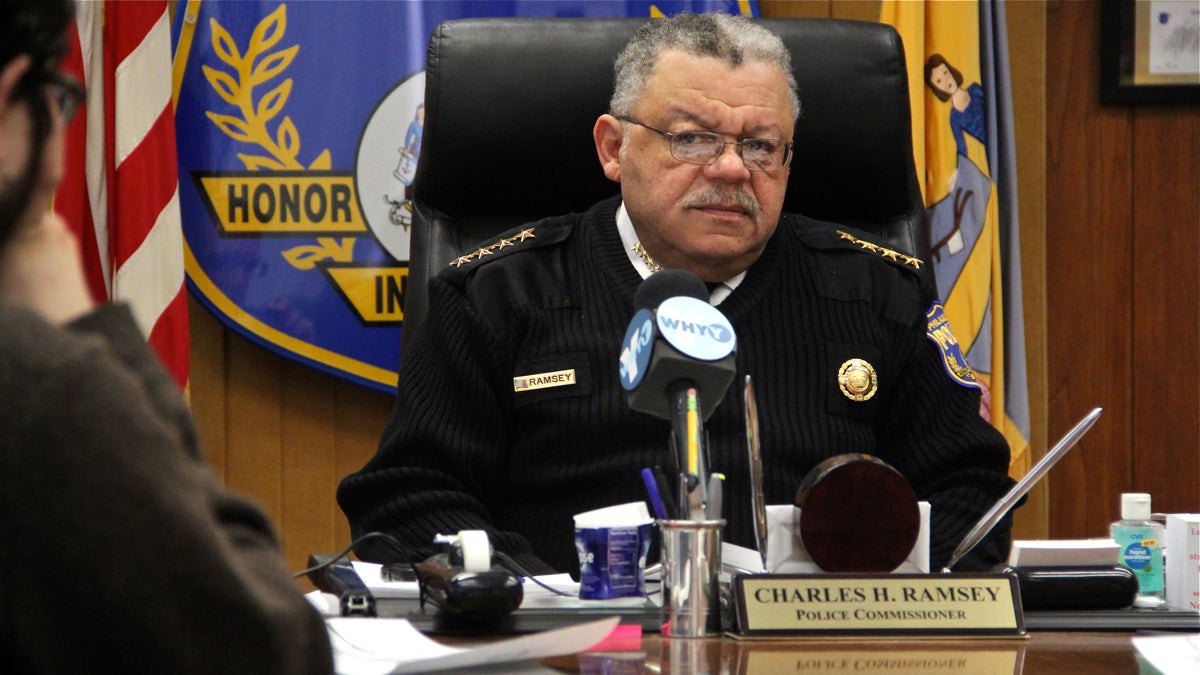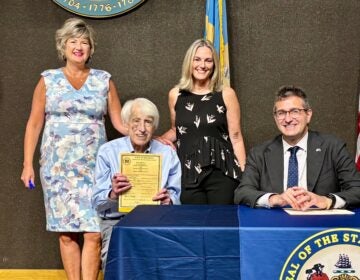Experts say ‘stop and frisk’ cannot be stopped in Philly
Listen
Philadelphia Police Commissioner Charles Ramsey says the promise to end stop-and-frisk "ignores the reality of gun violence in this country." (NewsWorks file photo)
All the leading candidates in the race to be Philadelphia’s next mayor have vowed to end the divisive police practice known as stop and frisk.
Yet, according to law enforcement experts, that’s not a realistic promise.
The first thing to understand is that, though the terms are often linked, a stop and a frisk are in fact two separate things.
A stop is self-explanatory: An officer stops a pedestrian and asks questions when he senses something suspicious. It’s supposed to be a temporary interaction.
A frisk is a pat down of someone’s outer clothing when an officer believes a person is armed.
These things have been common practices for as long as police have been patrolling streets.
David Harris, a law professor at the University of Pittsburgh who’s written extensively on racial profiling and police tactics, said a key U.S. Supreme Court decision on the topic is Terry v. Ohio, decided in 1968. In that case, the court held that an officer can pat down a suspect when it’s reasonable to believe that criminal activity may be about to take place.
No doubt, Harris says, it’s a judgment call. Some times, however, it’s more obvious than others. For instance, if someone is walking heavy on one side, or keeps tapping their waist – those may be signs that someone is nervous and carrying a gun, though those signs could also just as well be personal tics.
“It’s never 100 percent clear-cut in any situation,” Harris said. “And the Supreme Court has made clear that the officer is allowed, and should, use his or her experience and training and all the policing he or she has ever done to make those judgments, but when they make those judgments they are not to be second-guessed by the perspective of a judge in a courtroom, or an academic in the classroom. They are to be judged if a reasonably police officer would have reacted the same way.”
He says lawsuits have shown that police conduct stop and frisk overwhelmingly in minority neighborhoods. In Philly, by the city’s own statistics, more than a third of stops are conducted without the right level of suspicion (Although that percentage has shown improvement). Consequently, right now, in an election season, no less, it’s politically convenient to make the practice a target.
Still, Harris says any talk of ditching the tactic wholesale is out of touch with the realities of daily policing.
“You would never get, nor would you want, stop and frisk to not be part of the police officer’s toolkit,” he said. “It’s an important thing to be able to do in the right circumstances. On the other hand, if it’s over-used, it has a high cost, because it’s a very personal, and sometimes very dangerous encounter.”
That’s an important point: It’s possible to back off stop-and-frisk, but not really possible to scrap it all together. But as a campaign platform, saying you’ll de-emphasize something might sound wishy-washy to voters.
When asked what he makes of the candidates taking pot shots at stop-and-frisk, here’s how Police Commissioner Charles Ramsey responded:
“It ignores the reality of gun violence in this country, in Philadelphia, in particular,” he said. “So we need to find the right balance and make sure that officers are conducting themselves, and going about their work, within the Constitutional guidelines. And that’s the key.”
Deeply rooted societal problems, Ramsey says, like poor housing stock, chronic joblessness, poverty, and lack of quality educational opportunities are plaguing too many Philadelphia neighborhoods.
“Why are police in large numbers actually in some of these neighborhoods? It’s because of the crime and disorder,” he said. “So, we have to deal with it in a more holistic fashion, as opposed to just saying, ‘Police are the problem, police are to blame, let’s stop using stop-and-frisk and things will be much better.'”
If stop-and-frisk were scaled back dramatically, he said, “I guarantee to you that nothing will change,” he said. “In fact, it could get a lot worse.”
Ramsey has been an advocate of community policing: having more officers walking beats and getting to know neighbors. Doing more of that, Harris says, will just naturally make stopping and frisking less prevalent:
“When they have rich information about what goes on in the neighborhood when they’re not there, then [police] don’t have to frisk every kid who comes along. They can actually know which people are dangerous, which people present the possibility of crime — and look at those people and see if there is something that makes them suspicious.”
In New York City, during his mayoral campaign, Bill de Blasio pledged to end the “stop and frisk era.”
And last year, de Blasio’s first in office, New York police still conducted about 50,000 stops. Now, to be sure, that’s roughly a tenth as many as when the practice was at its height.
But Harris says it’s telling evidence for his theory: Even when you try to “get rid of” the policy, it will never really go away.
WHYY is your source for fact-based, in-depth journalism and information. As a nonprofit organization, we rely on financial support from readers like you. Please give today.




